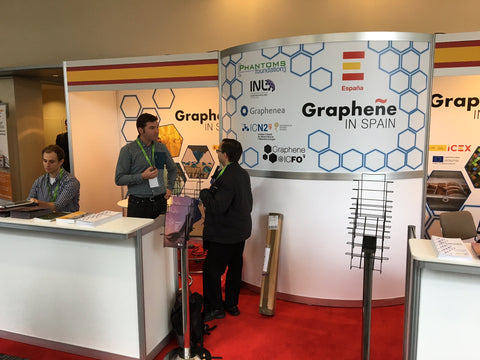more »
Montreal (Canada) hosted the 1st edition of Graphene Canada, a graphene & 2D materials conference and exhibition. The 3-day event took place last week, gathering key players of the graphene community and related industrial sectors.
Graphenea participated with an invited talk by CEO Jesus de la Fuente, entitled “The road to commercialization of graphene nano materials”. Jesus' talk was part of the Industrial Forum that took place on the second day of the conference. Jesus spoke in the session “Production & Standardization”, which was held in parallel to the “Energy”, “Applications”, and “Worldwide Initiatives & Priorities” sessions. In addition, Graphenea was featured at the “Graphene in Spain” stand.

Picture: “Graphene in Spain” represented with a stand at Graphene Canada 2015.
Graphene Canada was launched as the first large graphene conference in Canada, with the aim to become an annual event that attracts global participants intent on sharing, exchanging and exploring new avenues of graphene-related scientific and commercial developments.
The Industrial Forum was conceived as a platform to present the most recent advances in technology developments and business opportunities in graphene commercialization. Representatives of graphene companies shared their market vision and business opportunities, while selected talks from industrial exhibitors presented commercial trends in current end-markets of graphene products.
In addition to the Industrial Forum, the event hosted workshops on cutting edge scientific research on “Materials and Device Characterization”, “Chemistry, Biosensors, and Energy”, and “Electronic Devices”. There were also numerous contributed oral presentations and student posters, as well as a brokerage event (“B2B Meetings”).

Picture: Full auditorium at Graphene Canada 2015.
This event in Canada joins a series of worldwide graphene events that increasingly contain strong industrial components, in addition to groundbreaking science. Such conferences aid the transfer of graphene research results into commercial products, offering a natural activity space for Graphenea, a company that has very close relations with both fundamental researchers and end-user markets.
via Graphenea

